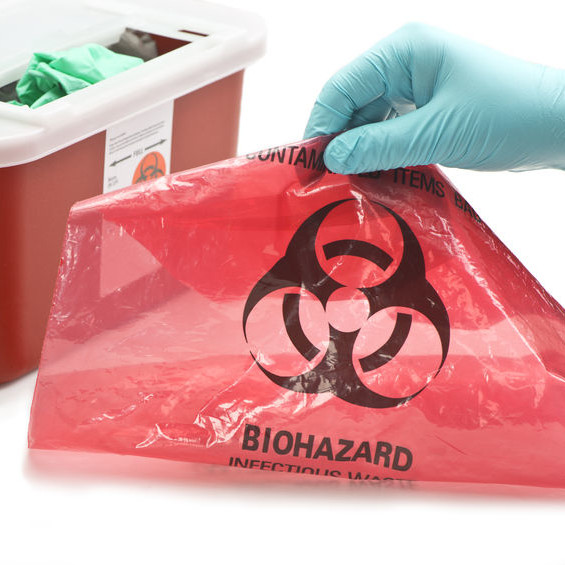
Body Fluid Control Program
What is a Body Fluid Control Program?
A body fluid control program is necessary to prevent contamination of products in food manufacturing facilities. When an employee becomes ill or injured in the workplace, the body fluid control program will allow quick action to quarantine and sanitize the affected area.1 The program should contain the following:1
- Establishing a response program
- Assembling a cleanup kit
- Procedures to respond to a body fluids spill
- Identifying quarantine areas affected by a body fluids incident
- Determine disposition of product and equipment after a body fluids spill
- Document response to a body fluid spill
Having an established body fluid control program will assure a quick response, containment, and safety of your organization.
Origin
Significant progress has been made worldwide in making food safer, though millions of people become ill each year from eating contaminated food. In 1963 the World Health Assembly (WHA 16.42) tasked the World Health Organization (WHO) with developing a global strategy to reduce foodborne disease. The resolution established the Joint Food and Agriculture Organization of the United Nations (FAO)/WHO Food Standards Programme, with the Joint FAO/WHO Codex Alimentarius Commission (Codex) as its principal body.2 The objectives of Codex are to develop standards for food, protect the health of the consumers, and ensure fair practices in the food trade.2
In a 2002 report on food safety, the WHO reported that, “Approximately 1.8 million children in developing countries (excluding China) died from diarrheal disease in 1998, caused by microbiological agents, mostly originating from food and water. One person in three in industrialized countries may be affected by foodborne illness each year. In the USA, some 76 million cases of foodborne illness, resulting in 325,000 hospitalizations and 5,000 deaths, are estimated to occur each year.”2
As the food supply chain from farm to consumer became more complex, government regulations were established to reduce contamination from human-caused bodily fluids.
Regulatory compliance
Body fluid control procedures are outlined for the food industry by several agencies, such as the FDA, USDA, and OSHA. Under FDA 21 CFR 110.10(a), the four major foodborne illnesses are listed as:3
- hepatitis A virus
- Salmonella typhi
- shigella
- E. coli
Symptoms of foodborne illness to be aware of are diarrhea, fever, vomiting, jaundice, or a sore throat with fever in addition to lesions and open wounds.3 Under HACCP, food manufacturers must establish a body fluid control program to prevent the risks associated with contamination of food from foodborne illness.
Relevance
To establish a body fluid control program, develop a system that allows for the quick response, containment, clean up, and quarantine of the area.
Establish the response program – Each facility should have trained people on each shift. OSHA requires formal training in CPR and first aid under certain circumstances. Check the local regulations of your facility.4
Assemble a cleanup kit – OSHA recommends a cleanup kit for bloodborne pathogens that can be very effective in a food manufacturing setting. The items can be used to absorb any bodily fluids quickly and sanitarily safely. The most common body fluids are vomit, diarrhea, or injury-related. The cleanup kit should contain:4
- Biohazard sorbents or absorbent powder – These are made to absorb and hold biological materials. They can come in many shapes and sizes.
- Neoprene gloves – Neoprene gloves will help prevent substances from coming in contact with hands.
- Mask
- Scoop with a scraper
- Sanitizing surface wipes – Once all the visible body fluids have been removed, all surrounding surfaces should be sanitized. Sanitizing wipes are made to kill any bacteria or virus that is left behind.
- Body fluids bags and ties – To safely dispose of biohazards
- Hand sanitizer– Allow for quick hand sanitization after cleaning up body fluids. Once the cleanup is complete, a full shower and change of clothes are recommended.
- Instruction guide
Identify the cleanup kits as part of a spill containment kit, and have them placed throughout the facility for easy access. The site of the incident should be quarantined, and all product should be examined to determine the disposition of product and equipment after a body fluids spill. Any product that has been exposed to body fluids must be destroyed.
Trained response team employees should fill out documentation that describes the incident, the location, date, time, type of body fluid, actions taken, product or equipment status, type of sanitizer used, and any other observations.
The following table lists the most common body fluids and the organisms of concern, as well as how the source commonly transmits disease:5
| BODY FLUID SOURCE | ORGANISM(S) OF CONCERN | PATHWAY FOR TRANSMISSION |
| Blood, such as cuts and abrasions, nosebleeds, contaminated needles* | Hepatitis B, AIDS virus, Cytomegalovirus | Cuts and abrasions; direct bloodstream inoculation |
| Feces | Salmonella, shigella, rotavirus, hepatitis A virus | Contaminated hands |
| Urine | Cytomegalovirus | Contaminated hands |
| Vomitus | Norovirus, rotavirus | Contaminated hands |
| Respiratory secretions, such as nasal and saliva discharges | Mononucleosis virus, common cold virus, influenza virus, hepatitis B virus, AIDS virus | Contaminated hands; cuts and abrasions; bites |
References
- AIB International. “Body Fluids.” Food Safety and Sanitation Distance Learning Course, Chapter 3.
- World Health Organization. “WHO Global Strategy for Food Safety: Safer Food for Better Health,” 2002, pp. 9–10. apps.who.int/iris/bitstream/10665/42559/1/9241545747.pdf.
- Center for Food Safety and Applied Nutrition. “Current Good Manufacturing Practices (CGMPs) – Food CGMP Modernization Report.” Center for Food Safety and Applied Nutrition, https://www.fda.gov/Food/GuidanceRegulation/CGMP/ucm207458.htm#EmployeeHealth
- “OSHA 3114 Hazardous Waste Operations and Emergency Response.” OSHA 3114 – Hazardous Waste Operations and Emergency Response, U.S. Department of Labor Occupational Safety and Health Administration, https://www.osha.gov/Publications/OSHA3114/osha3114.html
- “How Should Child Nutrition Staff Handle Body Fluids, Such as Blood and Vomit?” Food Safety Education | For Foodservice | Training Curricula | HACCP | | | Untitled, http://www.foodsafetysite.com/foodservice/conducting/ChildNutrition/SchoolHACCP/Answers/FAQbodyfluid. Accessed 21, Feb. 2018.

